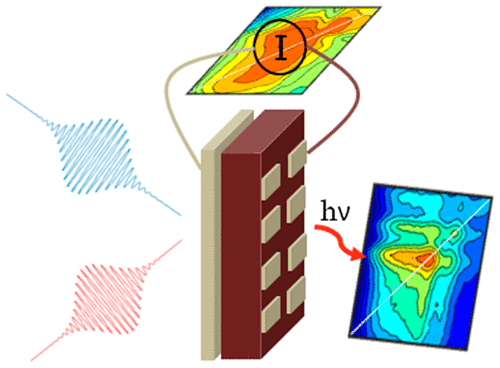Distinguishing Energy and Charge Transfer Processes
Abstract
Interest in photovoltaic devices based on layered perovskites is motivated by their tunable optoelectronic properties and stabilities in humid conditions. In these systems, quantum wells with different sizes are organized to direct energy and charge transport between electrodes; however, these relaxation mechanisms are difficult to distinguish based on conventional transient absorption techniques. Here, two-dimensional “action spectroscopies” are employed to separately target processes that lead to the production of photocurrent and energy loss due to fluorescence emission. These measurements show that energy transfer between quantum wells dominates the subnanosecond time scale, whereas electron transfer occurs at later times. Overall, this study suggests that while the intense exciton transitions promote light harvesting, much of the absorbed energy is lost by way of spontaneous emission. This limitation may be overcome with alternate layered perovskite systems that combine smaller exciton binding energies with large absorbance cross sections in the visible spectral range.


